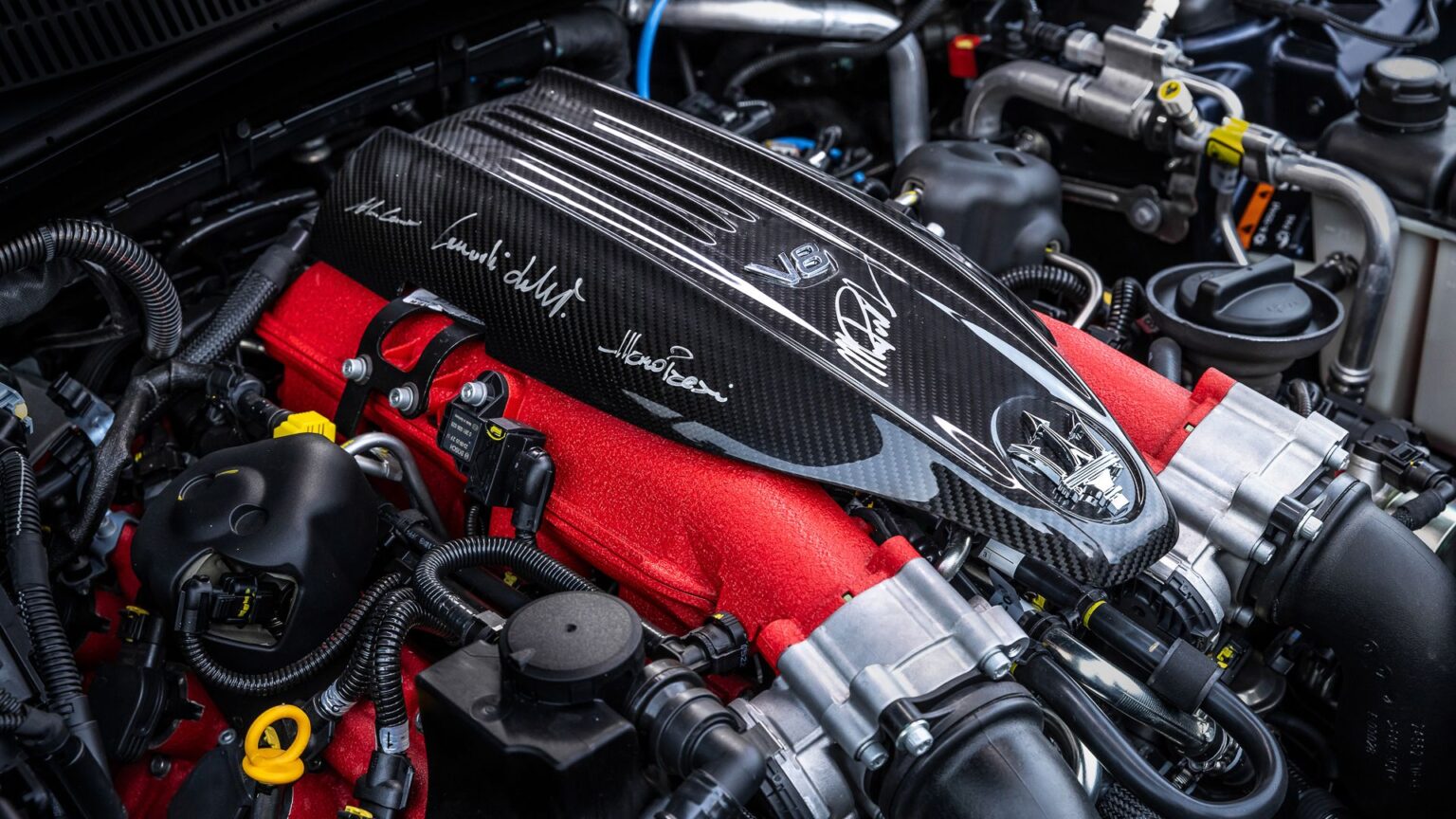engineering chief just dropped a bombshell that could reshape the luxury car landscape or, at the very least, the immediate future of Maserati. After years of insisting their twin-turbo V6 Nettuno engine was the future, company executives are now openly discussing a potential return to V8 power. The Italian automaker hasn’t offered an eight-cylinder engine since discontinuing Ferrari’s twin-turbo 3.8-liter V8 in models like the Ghibli 334 Ultima and Quattroporte Grand Finale. But with Stellantis desperately seeking solutions to revive struggling luxury brands, even sacred engineering decisions are back on the table.
This dramatic shift comes as parent company Stellantis faces mounting pressure from declining sales and punishing US tariffs. Maserati’s global sales plummeted over 50% in 2024 to just 11,300 units, bleeding €260 million in losses. More troubling still, the US market represents 35-40% of Maserati’s sales, making Trump’s 25% import tariffs a potential death blow for the Italian marque. Stellantis has already hired consulting giant McKinsey to explore radical options for Maserati and Alfa Romeo, including potential partnerships or even spinning off the luxury brands entirely.
Following Ram’s V8 Playbook
The clearest precedent for Maserati’s possible V8 revival comes from within Stellantis itself. After facing customer revolt over dropping the beloved HEMI V8 from Ram trucks, CEO Tim Kuniskis dramatically reversed course earlier this year. just six months after Kuniskis rejoined the company, complete with a defiant “Symbol of Protest” badge. Ram’s swift about-face proved that customer emotion sometimes trumps engineering efficiency.
According to Davide Danesin, Maserati’s head of engineering, the company recognizes similar market sentiment around V8s.
“We know the mood about V8s in the market of course, and would not say that we will never use again a V8,” Danesin told Australian publication Car Expert.
The executive specifically mentioned “special versions or some other models” as potential candidates for eight-cylinder power, though he emphasized the Nettuno V6 remains central to current strategy. This could play out the same way for the 2026 model year.
Design chief Klaus Busse offered practical context for why Maserati initially abandoned V8s. The compact Nettuno engine enables front-mid-engine layouts in cars like the GranTurismo while allowing all-wheel drive capability. A larger V8 block simply wouldn’t fit behind the front axle in mid-engine configurations. But Busse’s frank admission that V8s offer “bragging rights” suggests Maserati understands the emotional appeal that pure performance numbers can’t match.
TopSpeed’s Take: Fighting for Survival in Luxury Battleground
The timing of these V8 hints reveals how dramatically Maserati’s situation has deteriorated. While competitors like , BMW, Mercedes-AMG, and Porsche continue offering V8 options alongside hybrid powertrains, Maserati went all-in on V6 technology. The strategy worked from an engineering perspective – the Nettuno produces up to 632 horsepower in the , exceeding the old Ferrari V8’s 572 horsepower output. But customer loyalty proved more complex than horsepower equations.
The luxury market’s unforgiving nature means perceived downgrading can be devastating for brand image. When buyers spend $150,000-plus on a GranTurismo, cylinder count becomes part of the prestige equation. Maserati’s pricing strategy compounds this problem – the new GranTurismo starts at $157,000, a significant premium over alternatives like the Lexus LC 500. Without the emotional appeal of a sonorous V8, justifying those prices becomes increasingly difficult.
|
GranTurismo |
GranTurismo Trofeo |
GranTurismo Folgore |
|
|---|---|---|---|
|
Engine |
3.0-liter V-6 |
3..0-Liter V-6 |
Electric |
|
Horsepower |
483 HP |
542 HP |
751 HP |
|
0-60 MPH |
3.7 Seconds |
3.3 Seconds |
2.6 Seconds |
|
Top Speed |
188 MPH |
199 MPH |
202 MPH |
|
Driveline |
AWD |
AWD |
AWD |
Even if Maserati greenlights V8 development, the timeline would be lengthy. The company doesn’t currently have an eight-cylinder engine in development, requiring either clean-sheet design or adaptation from Stellantis’ parts bin. Modern engine development typically spans 3-5 years, meaning any V8 revival wouldn’t reach production until the late 2020s at earliest.
Source: Car Expert
Read the full article here


